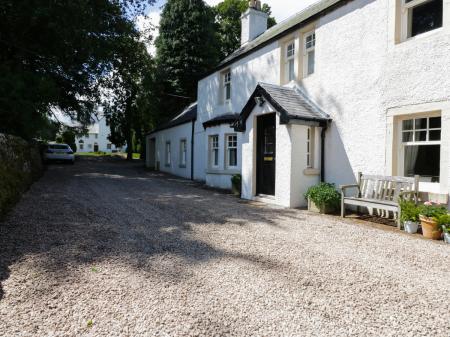
Important Update!
Sad news. The National Trust for Scotland have reluctantly decided to close the Angus Folk Museum. The historic museum buildings were found to be structurally unstable and could not be repaired. The Trust is currently considering options for the museum collection. In the meantime you can clearn more about the heritage of Angus at another Trust property, the House of Duns.
This page is maintained purely for archival purposes and in the hope that the Trust will decide to to resurrect the museum in a new form.
UPDATE #2
Good news. The National Trust for Scotland is going to reopen the Folk Museum at House of the Duns in 2019. We'll update this page as the time nears.
The Museum
The emphasis is on simple artefacts from daily life, with a focus on agriculture and linen weaving, both of which were enormously important in the Angus region.
Across the road is an agricultural area with implements and a reconstruction of a traditional farm steading, illustrating a way of life that is now fading from memory.
Among the exhibits is a highly decorated Glenisla hearse, used to carry wealthy parishioners to their burial. There is a traditional smiddy, or blacksmith shop, with a forge and smithing tools. The stable boasts an array of harnesses and equestrian gear used by local farmers, and the bothy shows the extremely basic accommodation used by unmarried labourers on a traditional farm.
See the dairy, with equipment used to make and shape butter and cheese. The Victorian kitchen has been recreated with all the equipment necessary to make traditional Scottish dishes.
There is also a cart shed with a large collection of farm carts. A large part of the cottages is used for spinning and weaving, harkening back to the days of a thriving cottage industry here. One very personal bit of nostalgia is 'Madge's room', a recreation of a traditional 'but and ben' chamber in the two-roomed cottage lived in by Madge Taylor at Craichie, 7 miles from Glamis.
The museum was established by Lady Jean Maitland, who developed a fascination with traditional Angus folk artefacts in the 1920s. Lady Maitland was inspired by the Highland Folk Museum in Kingussie to create a similar collection of rural life below the Highlands.
Lady Maitland purchased many of the items herself, and others were donated by friends. At first, the museum was located in the manse at Rescobie, but in 1955 the Earl of Strathmore gave the collection of traditional cottages at Glamis to be the museum's permanent home.
The museum is a very short walk from the front gates of Glamis Castle. Even closer, and on the same lane as the museum is a Pictish cross slab in the manse garden.





 We've 'tagged' this attraction information to help you find related historic attractions and learn more about major time periods mentioned.
We've 'tagged' this attraction information to help you find related historic attractions and learn more about major time periods mentioned.




